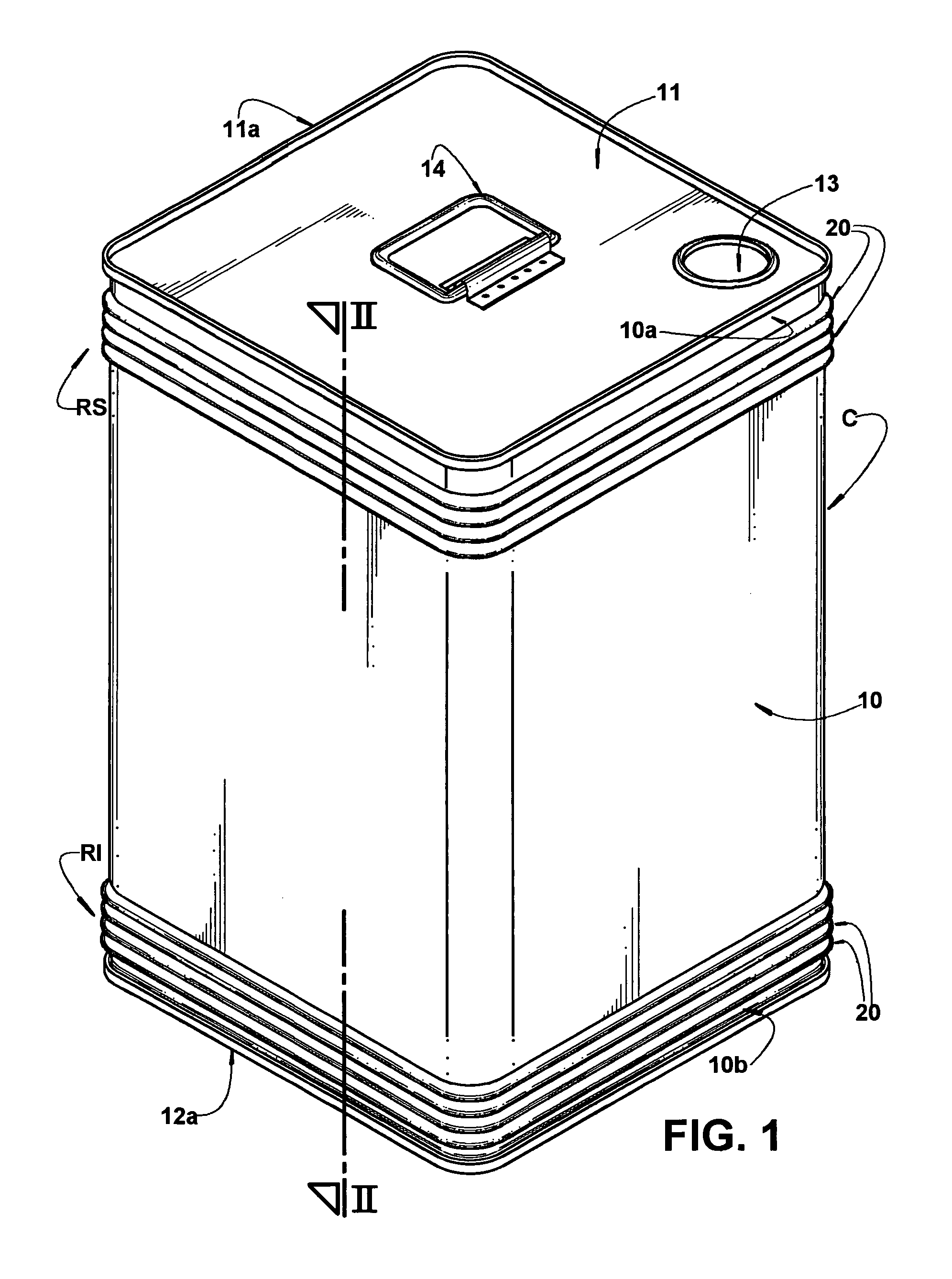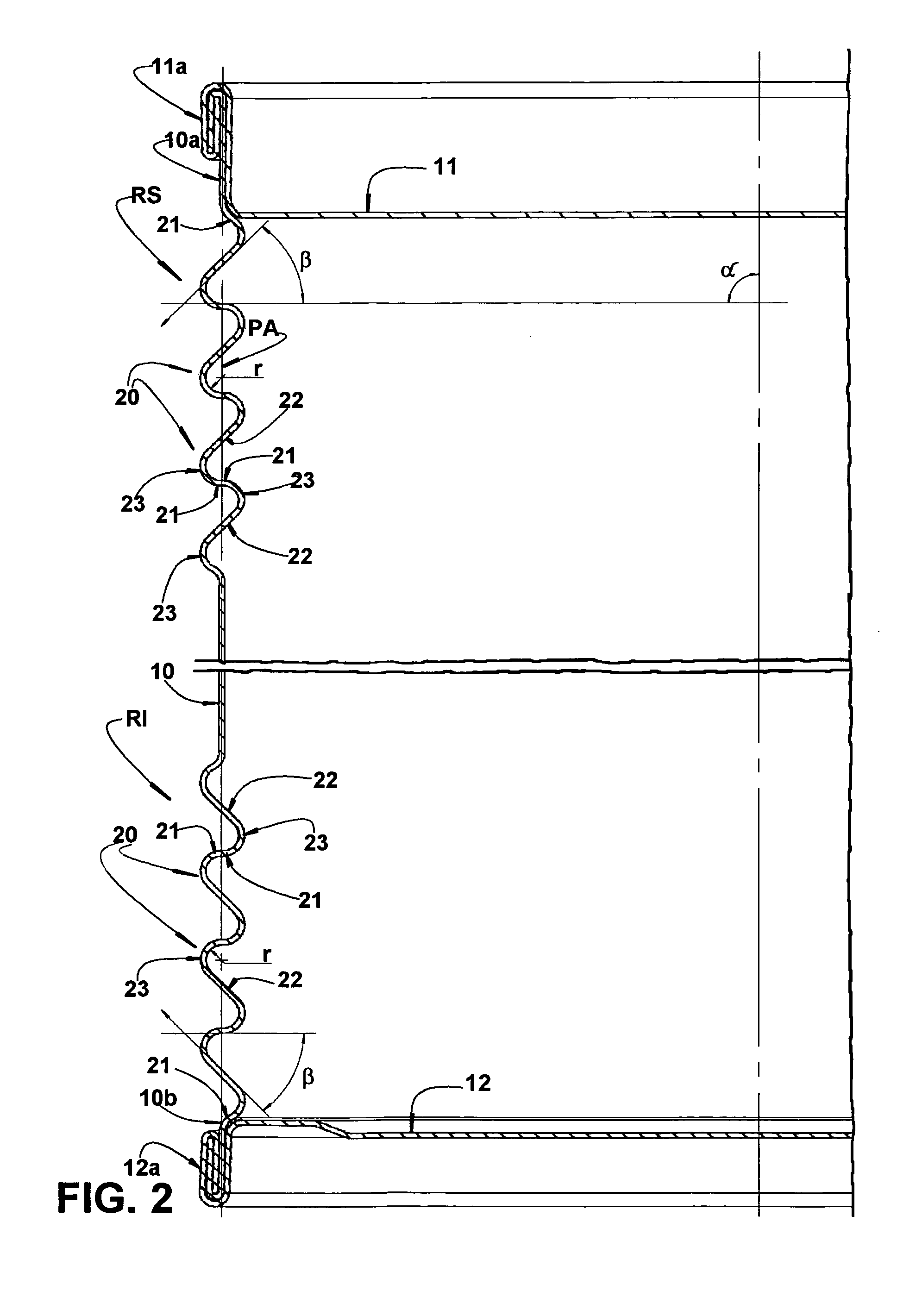Metal sheet container for transporting dangerous products
a metal sheet container and dangerous product technology, applied in the direction of containers, containers/bottles, containers, etc., can solve the problems of affecting the safety of the container, and reducing the service life of the container, so as to reduce the deformation and reduce the deformation. , the effect of reducing the deformation
- Summary
- Abstract
- Description
- Claims
- Application Information
AI Technical Summary
Benefits of technology
Problems solved by technology
Method used
Image
Examples
Embodiment Construction
[0031]In the construction illustrated in figures from 1 to 3 of the enclosed drawings, the present container comprises a body C having a tubular side wall 10 with a square contour, and an upper wall 11 in a single piece sheet, whose outer peripheral portion is conventionally affixed, by a double-seam 11a, to an upper end edge 10a of the tubular side wall 10.
[0032]Although not illustrated herein, it should be understood that the upper wall 11 can be in the form of a structural ring, peripherally double seamed to the tubular side wall 10 and whose inner opening defines a seat onto which is seated and axially retained a lid which occupies a substantial extension of the area of said upper wall 11, as illustrated in FIGS. 1 to 6 of BR 0201566-8.
[0033]The illustrated container further comprises a lower wall 12 which is peripherally and conventionally affixed, by a double-seam 12a, to a lower end edge 10b of the tubular side wall 10.
[0034]In the illustrated construction, the upper wall 11 ...
PUM
 Login to View More
Login to View More Abstract
Description
Claims
Application Information
 Login to View More
Login to View More - R&D
- Intellectual Property
- Life Sciences
- Materials
- Tech Scout
- Unparalleled Data Quality
- Higher Quality Content
- 60% Fewer Hallucinations
Browse by: Latest US Patents, China's latest patents, Technical Efficacy Thesaurus, Application Domain, Technology Topic, Popular Technical Reports.
© 2025 PatSnap. All rights reserved.Legal|Privacy policy|Modern Slavery Act Transparency Statement|Sitemap|About US| Contact US: help@patsnap.com



